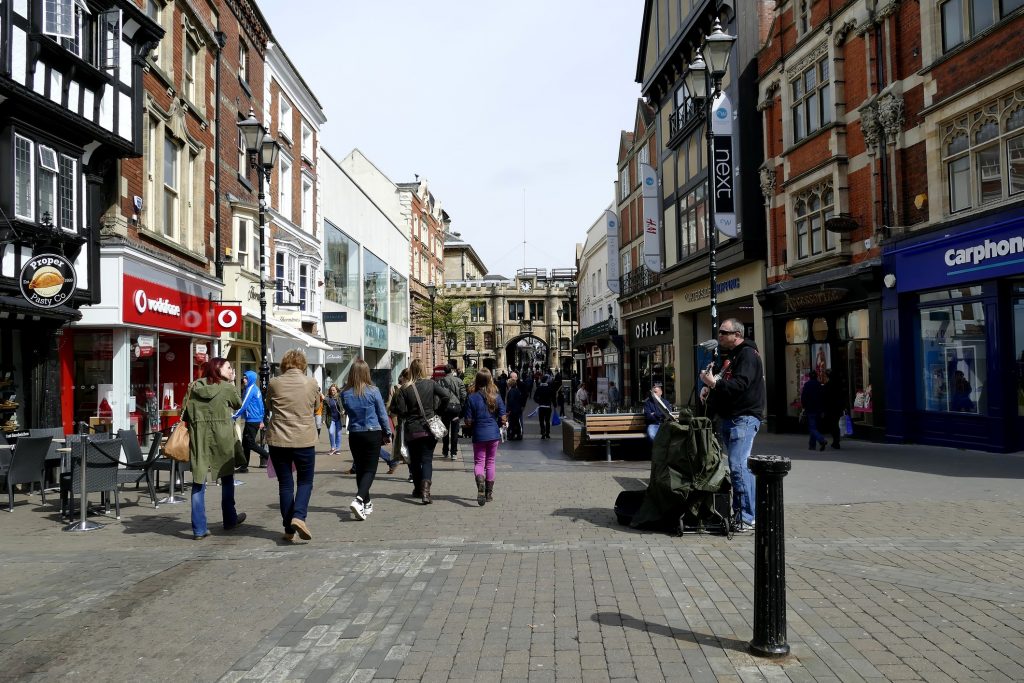Martin Feakes UK Buildings Market Director at Ramboll takes a close look at the Government’s budget announcement to invest £675m into revitalising our high streets

In his latest budget, Phillip Hammond announced that he was set to allocate £675m to a ‘Future High Streets Fund’. While this may appear to be focused on helping our struggling retailers in their ongoing battle against the influx of digital retail, it is also set to be an important aid for those working to create attractive and liveable urban environments.
The high street has been at the centre of communities for generations and ensuring that it continues to thrive in the face of challenges from out of town hypermarkets and online retailing will be vital in keeping our towns and cities alive. The most ‘liveable’ locations are those where people can work, live and play, and so vibrant town centres are key to making our urban environments locations where people want to be, and where they feel secure and happy.
In the first instance, the fund will help local authorities in drawing up master plans for their high streets, investing in improvements, supporting redevelopment, adapting infrastructure to meet modern transport practices and developing strategies to deliver much needed footfall. In addition, the easing of planning regulations to allow the building of residential accommodation in and above retail and commercial property could be key in transforming the look and feel of high streets.
Too often, the default approach is to knock down existing building stock and start again. However, there is significant space in and above unused retail and commercial buildings in towns which, estimates suggest, could provide 300,000 – 400,000 new homes. At a basic level the presumption to re-use rather than demolish would be a great step forward towards a more sustainable society. However, there are still many challenges to developing in this way.
Change in building occupancy class is a complex and time-consuming process and most planning authorities are starved of the resource needed to speed this up. Additional government investment in planning departments is surely needed to address this.
From a technical perspective, whilst structural capacity can often be justified, the work required to make the building fabric meet regulations, ensure energy efficiency and provide good daylighting is less straightforward. In addition, whilst repurposing commercial and retail space will help provide a diversity of housing stock, low cost conversions could result in poor quality and unimaginative designs that are far from great places to live and do little to enhance the town centre. There is a responsibility on developers, designers and planners not to let this happen. Good design, coupled with new technologies are key to making the most of this.
The softening of planning regulations should help underpin the strategic land values of town and city centre sites, but it remains to be seen if these measures will tempt developers and funders into this space in the numbers needed to make a real difference. Variable costs such as the Community Infrastructure Levy can still have a significant effect on viability of schemes and make re-development less attractive than it could be.
However, to think that town centres will become all about residential accommodation is to miss the point. Balanced high streets where people live, work and play are the key to vibrant communities. Town centres need to be adaptable with the right mix of uses, as well as good transport links, infrastructure and public spaces. Whilst the Budget announcement of a cut in business rates will not help larger retailers and high street chains, smaller independent retailers will benefit. If they can be enticed back and bring with them extra employment, it is these businesses that will arguably bring a greater richness, diversity and sense of local community back to our town centres.
Whilst the impact on town centres from the changing face of retail is clear to see, what is not yet apparent is how seismic shifts in transportation will affect them. Although the budget was virtually silent on this, the surge in electric vehicles, followed by autonomous vehicles, followed by who knows what is likely to have an even bigger impact.
With the money announced in the budget, it will be interesting to see how local authorities develop their future high streets plans and the extent to which transport technology and smart mobility are considered. Given the rapid pace of change, it appears that agility and flexibility – not something usually associated with high streets – will be key.
Leaving aside trains and busses, just focussing on cars is challenging enough. In the short term, there are choices to be made about how to tackle congestion and improve air quality. Measures already being put in place to tackle these challenges are driving the take up of electric vehicles and leading to the first ‘big change’ on our high streets – charging points. Industry and authorities are only just starting to understand what these mean in terms of infrastructure upgrade, space allocation and pricing strategy. The costs to authorities of this and effects on revenue streams are all to be determined.
Of even greater potential impact to our towns and high streets is the autonomous vehicle (av). No longer an idea for the distant future, predictions are that av’s will comprise a significant proportion of road traffic within ten years. However, the bigger cultural shift is that people will no longer feel the need to own them. Driverless ‘Uber-style’ vehicles could see a dramatic fall in the amount of traffic on our roads and, as importantly for our towns and high streets, a much lower requirement for car parking.
If the government sees an opportunity for re-purposing under-used retail and commercial space for housing, what about the possibility for the huge open spaces and multi-storey buildings that we currently use for car parks? It’s an intriguing prospect and one that potentially offers an even greater opportunity to improve amenity and liveability in our urban areas.
Put together and in overall terms, the package of measures announced in the budget is surely positive for our town centres but there is so much to consider and whether the collective effect is sufficient to deliver the step change needed remains to be seen.
 Martin Feakes
Martin Feakes
UK Buildings Market Director
Ramboll
Twitter: @Ramboll
















